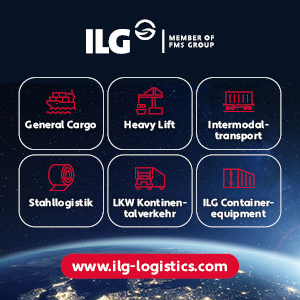Pig iron, also known as crude iron, is iron that has been cast into ingots that measure approximately 10 cm by 10 cm. “They have a convex top, which means they look a bit like a cake that has just been taken out of the tin. Except they weigh 10 to 20 kilos a piece, which would be quite a heavy cake or bun,” says Dico Regoord, Sales Manager at ZHD Stevedores.
The Austrian metal products distributor Carbones Holding put together this record shipment of pig iron, which it will be supplying to clients across Europe. Sebastian Brunner, who works as a trader for Carbones: “Normally, a pig iron shipment is 30,000 to 35,000 tonnes. But this time, we’re shipping out 50,000 tonnes. That has never been done before with pig iron! We’re very happy to have pulled it off.”
Organising, coordinating and planning a shipment is a complicated process that requires close collaboration between all of the parties involved. Pig iron isn’t made near a port – the production locations are more land inward. The iron needs to be moved by train, truck or smaller vessel to the large carrier in the port. It can be quite tricky to get all 50,000 tonnes of pig iron from a variety of locations to the ship on time.”
Every year, Carbones trades about 2.2 million tonnes of metal products – mostly pig iron – serving some 400 clients in Europe. Pig iron is used as a raw material for steel, which is used to manufacture machinery, among other things. The automotive sector uses it for engine blocks, for example, for machines, trucks, cars and buses. But also exhaust pipes, brake discs and axles. The wind power sector uses pig iron for the towers that support the turbines’ rotor assemblies.
The pig iron is shipped from Rio de Janeiro by the MV Yuanping Sea. This sea-going vessel is 200 metres long and 32 wide and has a draught of 12 metres. The ship loaded its cargo in the port of Rio de Janeiro, departing there on 3 October.
The pig iron will be stored by ZHD Stevedores before being distributed further throughout Europe. Dico Regoord: “We will be using our self-propelled floating crane to unload the ship. We started preparing for this weeks ago. The ship has five holds and is carrying multiple payloads with different categories of pig iron. These orders will be divided up on board using so-called separations, which are made from boards or tarps.”
Sebastian Brunner adds: “Another unique feature of this shipment is that it includes different types of pig iron – all of high quality. You may not see it from the outside, but the various orders differ in terms of chemical composition. It can be quite a challenge to prevent these different categories from getting mixed up on board the vessel.”
There will always be hiccups in an operation of this size. For example, right now the water levels along the Rhine are too low for direct forwarding via inland shipping. That’s why we will be storing 18,000 tonnes of iron at ZHD Stevedores’s facilities in Dordrecht. From there, we can transport these orders by truck or inland vessel to our clients: foundries and steel manufacturers in Denmark, Sweden, Switzerland, France and Belgium.”
Jetzt auch auf Instagram http://instagram.com/oevz.at












